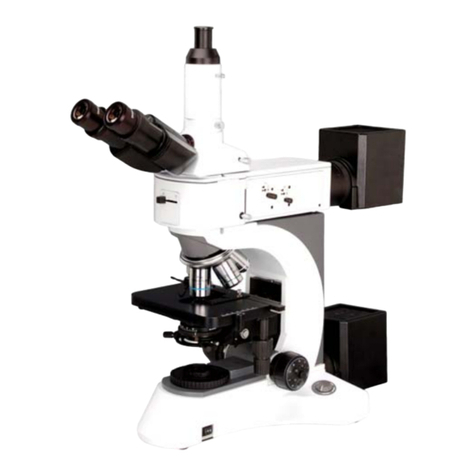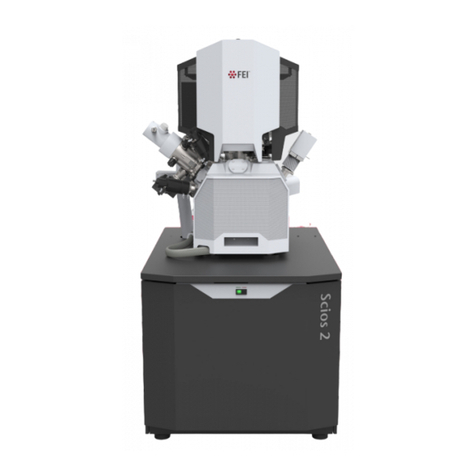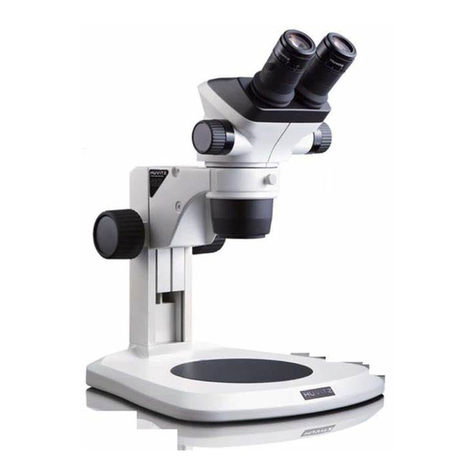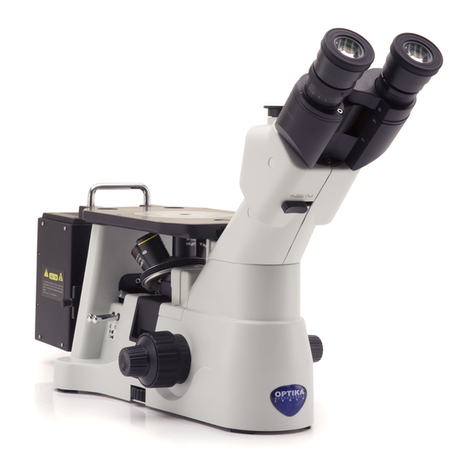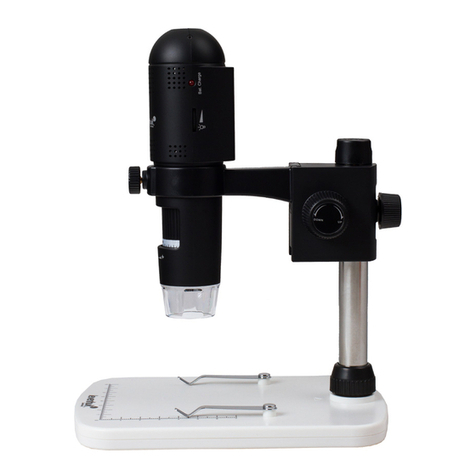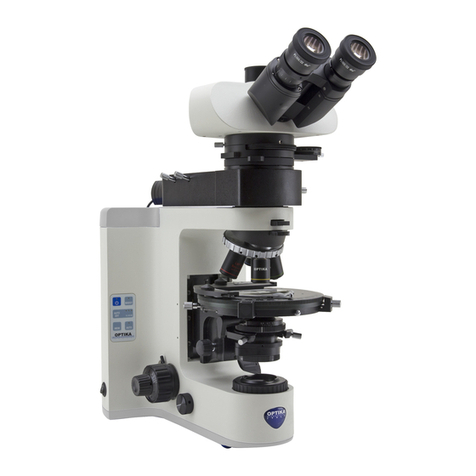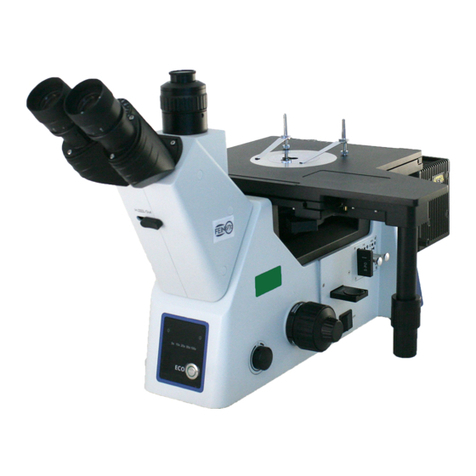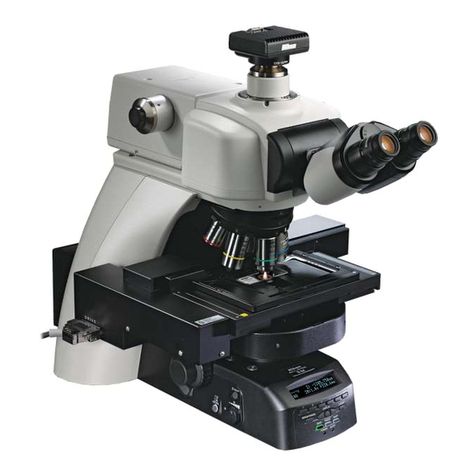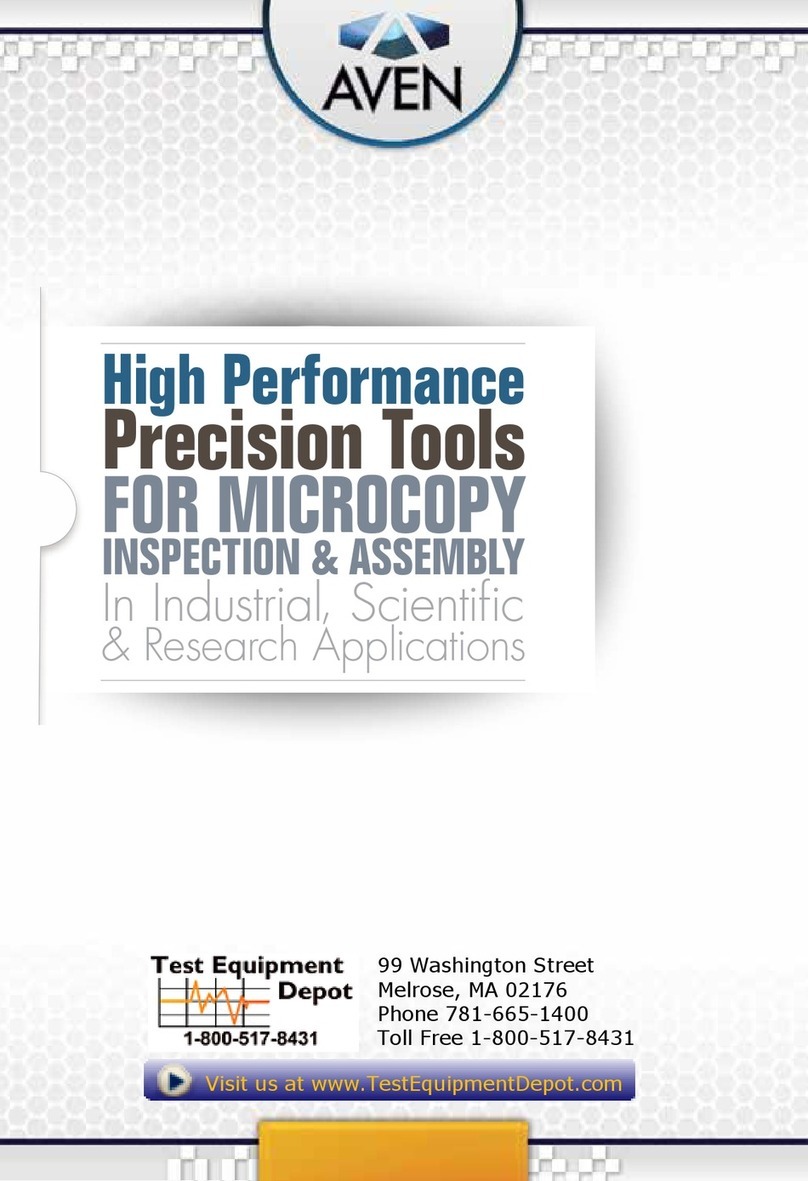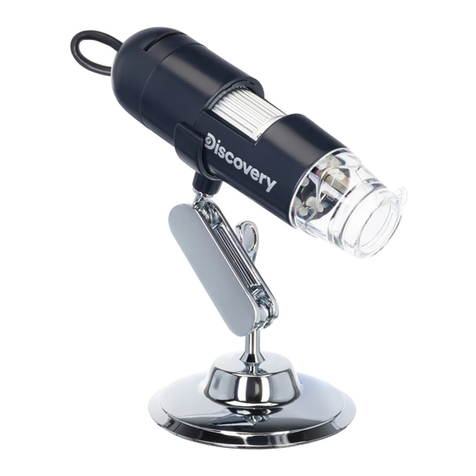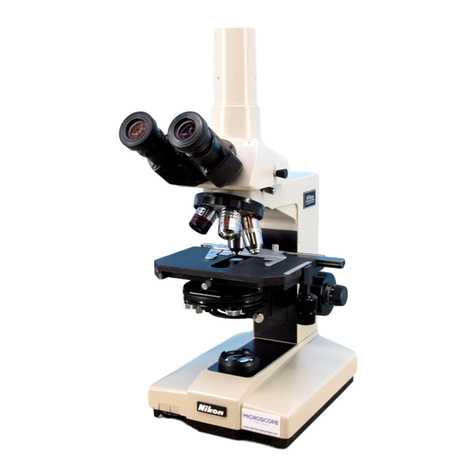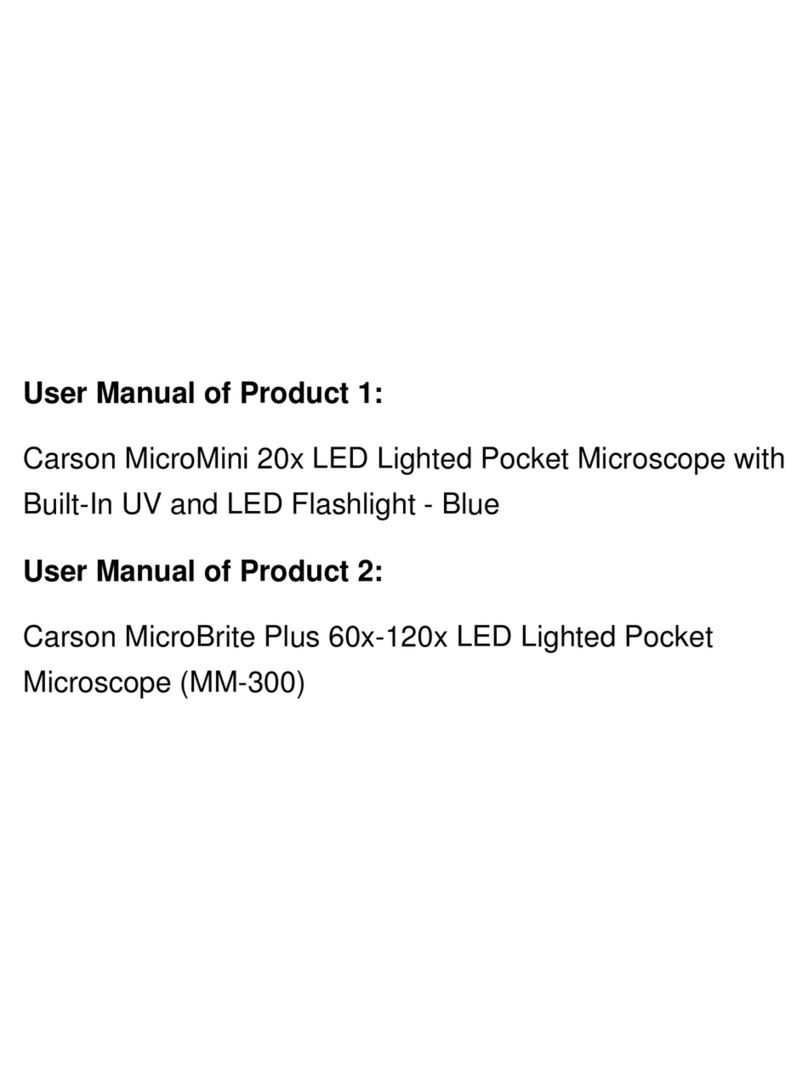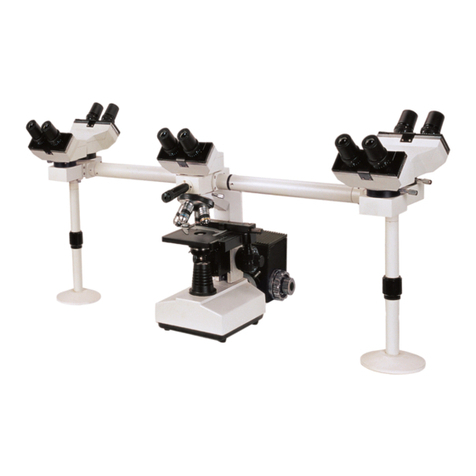Nipon Optics x User manual

1
NIPON 100x, 400x & 900x MICROSCOPE
Instruction Manual

2
Congratulations on your purchase of the Nipon 100x, 400x & 900x Microscope! This equipment unloc s exciting new
adventures and is designed to bring hours of enjoyment, wonder and just plain fun. Discover the hidden microscopic
world around you!
Before trying out your new equipment, please ta e the time to read the important Cautionary Statements and Safety
information below.
CAUTIONARY STATEMENTS
This microscope set may include chemicals that could be harmful if misused. Please read all cautionary statements in this
Manual and on individual containers carefully. This set also contains instruments and other materials with functional sharp
points and edges that may be harmful if misused. It is not to be used by children under 8 years of age. For children 8
years and older, please use with care and always under supervision of adults.
The following chemicals may be included in this pac age and could be harmful if misused:
Eosin Biological Dye – Caution: Harmful! Small parts present a cho ing hazard. Do not swallow. Keep away from small
children. In case of accident, call a doctor.
Gum Me ia – Caution: Do not swallow. Avoid eye and s in contact. Keep away from small children. In case of accident,
call a doctor.
Do not allow chemicals to come into contact with any part of the body, particularly the mouth and eyes. Keep
small children and animals away from experiments. Eye protection is recommended.
SAFETY INFORMATION
General First Aid Information
a) In case of eye contact: Wash out eye with plenty of water, holding eye open if necessary. See immediate
medical advice.
b) If swallowed: Wash out mouth with water, drin some fresh water. Do not induce vomiting. See immediate
medical advice.
c) In case of inhalation: Remove person to fresh air.
d) In case of s in contact and burns: Wash affected area with plenty of water for 15 minutes.
e) In case of a cut: Wash the cut with antiseptic solution (if unavailable, use clean water). Next, carefully place a
bandage over the wound. In case of serious injury, you should see first aid and inform a doctor as soon as
possible.
f) If in doubt or serious injury occurs, see medical attention immediately. In addition to the container, ta e these
instructions and any material used in the slide preparation with you.
ADVICE FOR SUPERVISING ADULTS
a) Read and follow the instructions, the safety information and the first aid information carefully. Keep them on
hand for reference.
b) The incorrect use of chemicals can cause injury and damage to one's health. Use only the slide preparations
listed in the instructions.
c) This microscope is for children 8 years and older, and only with adult supervision.
d) Because children's abilities vary, even within age groups, supervising adults should exercise discretion regarding
which slide preparations are suitable and safe for children. The instructions should aid adults in assessing slide
preparations to discern their suitability for each child.
e) Supervising adults should discuss the warnings and safety information with the child before commencing the
preparation of slides. Pay particular attention to the safe handling of chemicals (if used).
f) Your preparation space should be ept clean, clear and away from any food storage areas. Prepare your slides in
a well-lit area and close to a water supply. A solid table with a heat resistant top should also be used.
g) A separate tin or buc et should be used for the disposal of solid waste materials. Any wasted solution should be
poured directly down a drain, but never into a sin basin.
h) To be used solely under the strict supervision of adults who have studied the precautions provided.

3
Caution: use care to install batteries in the orientation indicated by illustration in the battery slots of the battery
holder. Do not install batteries bac wards or mix new and used batteries. Do not mix battery types. Remove the
batteries if this equipment will not be used for an extended period of time.
LET'S BEGIN!
Carefully lift the microscope from the box using two hands. Place one hand around the microscope arm and the other
under the base. For best results, use the microscope on flat, sturdy surfaces. Always be mindful of your mirror and
light source. The more light that is reflected or transmitted through the hole in the stage, the brighter and sharper the
images will appear in the microscope eyepiece.
ACCESSORIES
A. SCALPEL
B. NEEDLE
C. STIRRING ROD
D. GRADUATED CYLINDER
E. COLLECTING VIALS
F. TWEEZERS
G. SLIDE COVERS AND
LABELS
H. REPLACEMENT LIGHT
BULB
I. PREPARED/BLANK SLIDES
J. MICRO-SLICER
K. PETRI DISH
L. GUM MEDIA
M. EOSIN
N. SEA SALT
O. BRINE SHRIMP EGGS
P. SHRIMP HATCHERY
Q. COVER SLIPS (UNDER BOX OF
SLIDES)
Figure 1

4
TIP:
Begin viewing at the lowest
magnification or power
and focus the object. Once
the image is focused,
increase magnification by
turning the objective turret
and refocus.
MICROSCOPE FEATURES
R. Focus Knob. Slowly turn the nob bac and forth to
focus an object in the eyepiece. Notice what happens to
the power indicator (U, Fig. 1) as you turn the nob.
S. The Bo y Tube. Connected to the eyepiece and helps
focus the lenses.
T. The Eyepiece with fixed lens that has a 10X
magnification. Remove the dust cover from the eyepiece
and put it aside in a safe place.
U. Power In icator/Objective Turret. The turret has 3
lenses or objectives: 10X, 40X, and 90X (See Fig. 2). The
shorter the objective, the lower the magnification. The
longest objective is the highest power. To calculate the
magnification you are using, multiply the value of the
objective by the power of the eyepiece (note that the
power indicator on the turret ma es this calculation for
you). For example, turn the power indicator to the
longest objective (90X), and multiply by the power of
your fixed eyepiece (10X) - you will magnify the object
by 900 times (note that the power indicator reads 900).
This means that the object appears 900 times larger
than it appears to the na ed eye! Gently turn the power
indicator on the objective turret (U, Fig. 1). You will feel
and hear the objective lens clic into place. Practice
turning the focus nob (R, Fig. 1) in both directions and
notice how far you can turn it without letting the
objective come into contact with the stage (V, Fig. 1).
V. The Stage is a flat platform with a hole in the centre to
allow reflected light off the mirror or light source to
enter the microscope.
W. The Stage Clips (2) hold the glass slide firmly onto the
stage.
X. Mirror/Light Source. While holding the base down,
pull on the arm to tip the microscope bac . Examine the
mirror and light source located below the stage to see
how you can adjust them, and choose one or the other.
The light source turns on automatically when tipped
upwards toward the stage. The mirror gathers and
reflects light into the microscope.
Figure 2
Figure 3
Install batteries in the base.

5
TIP:
Always eep both eyes open
when loo ing through the
eyepiece. Doing so will
relieve stress on your eyes.
CAUTION:
Be careful as you turn the
focus nob so that the
objective lens does not
ma e contact with a slide or
the stage. This may cause
damage to the slide and
also to the objective lens.
CAUTION:
To prevent the wires
attached to the light from
brea ing, never rotate the
light source a full 360°.
Y. Base/Battery Compartment. Place the microscope on
its side. To remove the protective plastic cover, remove
the screws with a Philips head screwdriver. Gently lift
and the base will open. Insert two "AA" batteries (user
supplied) in the base. Match the positive (+) and
negative (-) poles of the batteries with the (+) and (-)
mar ings on the base (Fig. 3). To replace lid, position it
over the opening and replace the screws.
Z. Colour Filter an Aperture Wheel. The colour filters
are incorporated in the stage. Use these filters to add
colours and enhance an image in the eyepiece.
Start Observing!
Tip: It is recommended that you begin viewing at the
lowest magnification or power and focus the object.
Once the image is focused, increase magnification by
turning the objective turret and refocus.
Now that you've studied the features of your microscope,
it’s time to ta e it out for a test drive and try out a simple
observing exercise.
1. Rotate the focus nob (R, Fig. 1) and raise the body tube
(S, Fig. 1) as far as it will go. Turn the turret (U, Fig. 1) to
the shortest objective (the power indicator will read
100x).
2. Put one of the prepared glass slides under the stage
clips (W, Fig. 1) and position the prepared specimen
over the hole in the stage.
3. Loo through the eyepiece (T, Fig. 1) and slowly turn
the focus nob until the specimen can be seen in focus.
Figure 4
Rotate light to
turn on.

6
CAUTION:
When you are finished
observing, be sure to turn
the light source around, if
necessary, so that it turns
off and doesn't wear down
the batteries. Remove the
batteries before storing the
microscope for a month or
longer.
NOTE:
The view presented in the
eyepiece is upside-down
and reversed from left to
right of the object. In other
words, if you wish to
examine more of the left
side, move the slide to the
right. Or if you wish to
examine more of the top of
the image, move the slide
down, and vice versa.
CAUTION:
Be careful not to touch the
slide with the objective
lens. You can brea the
slide and/ or the lens by
touching the slide with the
lens.
4. Observe what happens when you slowly move the light
source (Fig. 4) or the mirror. Adjust the mirror or light
source to provide the amount of light that gives you the
best image.
5. Loo in the eyepiece and observe what happens to the
image when you move the slide from side to side and
up and down.
6. If you wish to increase magnification, rotate the
objective turret to a higher power and refocus.
Tip: Don't always assume that increasing magnification will
produce the best image for viewing. Each time you increase
in magnification, the amount of light decreases, and the
section of the image you are able to view also decreases.
This is desirable for some specimens, but not for others.
Try Out the Colour Filter
The colour filter is located below the stage and the
wheel can be rotated at the front of the stage (Z, Fig. 1).
Rotate the filter wheel to change filter colours. Observe
how the colour filter affects your view of the prepared
slide.
Turn on the light and set if so it shines through the filter.
Ta e a blan slide and place a few grains of salt or sugar
on it. Rotate the filter wheel and see how the filtered
light enhances the image of the salt or sugar.
Tip: Use the colour filter especially when loo ing at clear or
dim specimens.
Hatching Brine Shrimp
Brine shrimp are tiny crustaceans that are ideal for study
with a microscope. Crustaceans are sea creatures with hard
shells and antennae. Crabs and lobsters are perhaps the
most well nown crustaceans. Brine shrimp are the major
part of the diet of many sea creatures. The word brine
means water containing noticeable amounts of salt. Brine
shrimp are salt water creatures.

7
Figure 5
Use the needle to place a drop of
water on a clean slide.
NOTE:
Your Nipon 100x, 400x & 900x microscope it comes with sea salt (N, Fig. 1), brine shrimp eggs (O,
Fig. 1) and a shrimp hatchery (P, Fig. 1). The brine shrimp eggs included with this set are dried and
will remain alive for up to five years if stored in a cool, dry place.
Perform the following procedure to hatch the brine shrimp eggs:
1. To hatch the eggs, first prepare a brine solution. Pour the entire contents of the vial containing
the sea salt (N, Fig. 1) into a quart of water. Add the brine shrimp eggs into the solution. Allow
the solution to stand at room temperature (70° - 80°F or 21° - 26°C) for 24 to 48 hours and the
eggs will hatch into nauplius larvae (this is the first stage of development after leaving the eggs).
2. Place some of the larvae into one of the compartments of the shrimp hatchery (P, Fig. 1).
3. Place some fresh brine solution in another compartment. Add a small amount of yeast to this
new solution. Then, using an eyedropper to transfer some of the larvae into this compartment as
well. The yeast will serve as food and produce oxygen for the larvae as they develop into matu-
rity. Without food and oxygen, the shrimp cannot develop and will die. Mature brine shrimp are
nown as Artemia Salina.
4. Observe the life cycle of the shrimp as they grow: the dried eggs, the hatching eggs, the
developing larvae, and finally, the mature shrimp.
5. The mature shrimp may be fed to fish in an aquarium if you so wish. However, first remove the
shrimp from the brine solution and place them into fresh water. An increase in salt may harm
the fish in the aquarium.
TIP:
Don't always assume that increasing magnification will produce
the best image for viewing. Each time you increase in magnifica-
tion, the amount of light decreases, and the section of the
image you are able to view also decreases. This is desirable for
some specimens, but not for others. Experiment observing with
all three objectives for all specimens until you get a feel for
magnification levels.
MAKE YOUR OWN SLIDES
It's so easy to ma e slides that the variety of slides you can create will be limited only by your own
imagination.
A section of almost any material can be placed on a slide and observed with a microscope. All you
need is the proper equipment and a little patience, and you'll be ma ing slides in no time. Every-
thing you need for the following experiments can be found in this it or around your home (ma e
sure to as a parent first before you borrow any of his or her items, such as the measuring cup).
Locate the follow items:
a) Petroleum jelly
b) Wide mouth jar and lid
c) A measuring cup
d) Paper towels
e) A potato, uncoo ed corn ernels, an apple, and other foods
f) 3 or 4 paper cups, or any small containers which can be discarded after use.

Figure 6
Place a cover slip on the slide.
Next, set up your wor area: the itchen table (ma e sure to as a parent for his or her
permission), the des in your room or any place where you can wor undisturbed. Label 3 of
your cups: clean, flush, and waste. Fill the flush cup with clean water. Next, you will obtain a
specimen and ma e your first slide.
WANT TO SEE CRYSTALS?
Use the measuring cup to measure one or two ounces of hot (but not boiling) water and pour
it into the clean cup. Slowly add as much table salt to the water as will dissolve. Stir the solution
with the stirring rod (C, Fig. 1) while adding the salt. Remove the sheath from the tip of needle
(ma e sure you save this and place it bac over the needle when you're done using it). Use the
needle (B, Fig. 1) to carefully place one or two drops of the salt solution onto a clean slide (Fig.
5).
CAUTION: The needle has a very sharp point. Always use caution while handling it.
Allow the slide to dry. The slide will dry covered with a white
substance. Place the slide onto the microscope stage. Rotate
the light source of the microscope until it turns on. Before
reading any further, loo through the microscope eyepiece and
write down what you observe.
If you carefully performed the experiment, you will see little
crystal cubes. A grain of (store bought) salt is made up of many
cubes. Place one or two grains of fresh salt on another blan
slide and compare it with the slide containing the crystal cubes.
If you wish to save your crystal slides, use the needle to put one or two drops of gum media (L,
Fig. 1) on the slide and gently place a cover slip (Q, Fig. 1) on top of the media (Fig. 6). Lightly
tap the cover slip with the needle or the stirring rod to evenly spread the media under the slip.
Attach a label to each slide and set aside for a few days until the media dries. If you don't wish
to save the slides, wash the slides in clean water and liquid soap. Rinse well and dry. Read the
"Save That Slide" section for more information about saving slides.
Further Crystal Experiments: Try out the above procedure with other salts such as Epsom and
Rochelle. Sugar will also crystallize, but you will need to let it dry overnight for the crystals to
form.
Preparing a Mount
Dip your scalpel (A, Fig. 1) in some clean water and ma e a smear across a clean slide. Use your
tweezers (F, Fig. 1) to place a portion of an insect—a wing, a leg or an antenna—on the slide.
Attach a cover slip (Q, Fig. 1) over the specimen and place the slide on the microscope stage.
Obtain a piece of hair from your head and place it on a wet slide. Try this again with more than
one type of hair on a slide and compare how they differ. Also try a piece of fern (or other plant)
and pollen and compare them as well.
Start thin ing li e a scientist as you perform your experiments. Observe carefully, ta e notes
(ma e sure you date them), and most importantly, eep your equipment and the wor ing
environment clean. Experiments wor best with clean and uncontaminated equipment. Parents
appreciate a clean wor area.

9
NOTE:
In order to stain a slide, you will need to prepare the Eosin Dye:
Without opening the container, loo closely at the container mar ed "Eosin Dye" (M, Fig. 1).
You'll notice a few grains of 'dust' at the bottom of the container. These are the grains of eosin.
Remove the container's lid and fill the container with water. Gently stir the mixture. You have
now prepared Eosin Dye for use.
Creating Smears
Use your scalpel (A, Fig. 1) to gently scrape off small shavings from the surface of a freshly cut
potato. Smear the shavings onto a clean slide. Clean the scalpel by swishing it in the fresh
water. Use your needle to put one drop of clean water onto the slide. Attach a cover slip to the
slide and place it on the microscope stage. Observe the slide and write down your observations.
You will see hundreds of starch grains.
Ta e a few ernels from an uncoo ed ear of corn. Scrape off some shavings and ma e a smear
as you did with the potato. Compare how the corn is different from potato. Create smears of
other foods such as apples, bananas, peaches and pineapples. You will observe that these items
have membranes rather than starch.
Before you ma e a permanent mount, you may wish to stain the specimen.
Staining Smears
Not all specimens are easily observed in the microscope. Staining specimens ma e them easier
to see. Staining is not difficult, but it does require care. It is recommended that you eep paper
towels nearby as the process can be messy.
First, create a fresh smear (you may use shavings from an apple or other piece of fruit) as
described previously. Do not place any water or a cover slip on the specimen. Set the slide aside
to dry, if necessary.
When the slide is dry, use the needle to place one drop of Eosin Dye (M, Fig. 1) on the slide.
Eosin Dye will stain your specimen.
Tilt the slide from side to side to spread the stain over the specimen. Remove the excess fluid to
the waste cup. Put down the slide and wait about two minutes.
To flush away the excess stain and to stop the staining action, hold the slide at an angle over
the waste cup. Using the needle, touch the slide just above the specimen area and slowly let the
water drain into the cup.
With a paper towel, pat the underside of the slide dry. Be very careful and try not to touch the
specimen. Allow the specimen to air dry for several minutes.
Some of the specimen will be flushed away, but enough will remain on the slide to ma e good
observations.
The Micro-Slicer
Insert specimens you wish to study into the holes of the micro-slicer (J, Fig. 1). Rotate the nob
to cut your specimen into thin slices. The Micro-slicer is an ideal tool in the ma ing of section
slides.
CAUTION: The blade of the micro-slicer is very sharp. Handle the micro-slicer with care.
A Simple Section Sli e
Section slides are extremely thin slices of tissues of s in, leaves, flower stems and other materials.

10
Generally, section slides are very difficult to ma e without special equipment and procedures.
However, there is one common household item which can be sectioned without special equip-
ment: the common onion, made up of layers of tissue.
Peel off the very thinnest layer you can. One that is nearly transparent will ma e an ideal section.
Slice into a piece about 1/4 x 1/4 inch (7 x 7 mm). Put two drops of Eosin Dye (M, Fig. 1) in a col-
lecting vial (E, Fig. 1). Pic up the piece of onion with your tweezers and place it in the vial.
Wait for a minute or two. Remove the piece from the stain and flush it with clean water, holding
it with tweezers over the waste cup. Place it on a clean slide. To save your slide, follow the
procedure described previously in the "Want to See Crystals?" section.
Use your micro-slicer to slice off very thin slices of other types of foods.
Life Un er Glass
Fill a wide mouth jar with fresh water. Let it stand for three or four days without the lid. Then
drop a handful of dry grass and a pinch or two of dirt into the jar. Put the cap on the jar and
eep it in a place where it will receive light (but not direct sunlight).
In about five days, you may examine the water. First ma e a special slide: Using the needle or
stirring rod, ma e a ring of petroleum jelly on a clean slide. The ring should be smaller than a
cover slip and be about half as thic as a slide. Put a drop of water from the jar onto the slide
inside the ring. Use the lowest power of your microscope and write down your observations. Did
you detect any movement in the water? The movement is caused by microscopic animals. Try to
focus on one of the animals - this may not be very easy as a drop of water is li e an ocean to a
microscopic creature.
If the animals seem to be moving too fast to study or don't stay in focus for very long, soa up a
little bit of water with a corner of a paper towel.
Remember, you can ma e a specimen slide out of almost any material. When you are on a
playground, at school, in a par , or just sitting around at home, train yourself to loo at all the
material around you. Keep an eye out for what might ma e a good specimen and discover the
hidden microscopic world that surrounds us all.
Save That Sli e
To save your slides, put gum media (L, Fig. 1) on a clean dry slide and then position your
specimen in the media. Place a glass cover slip (Q, Fig. 1) over the media and attach a label. See
Fig. 6.
Note: Your microscope set contains both glass slips and statical (thin plastic) slips. Statical slips are
thin plastic sheets that will stic to your slide using static electricity. They are ideal for temporary
slides. Glass slips must be attached to the slide using gum media. Use a glass slip if you wish to
ma e a permanent slide.
Remember to Turn Off the Light Source
When you are finished observing, be sure to turn the light source around, if necessary, so that
it turns off and doesn't wear down the batteries. Remove the batteries before storing the
microscope for a month or longer.
Make a Recor of Your Experiments
Begin to start thin ing li e a scientist as you perform your experiments. Observe carefully and
ma e records of your experiments (ma e sure you date them). Record the types of specimens
you observe; their colours, shapes and patterns; how they loo through each objective; how
you prepare your slides; what tools you use; how different specimens compare with each other;
and so on. Experiment observing with all three objectives for all specimens until you get a feel

11
for magnification levels. And most importantly, eep your equipment and the wor ing
environment clean. Experiments wor best with clean and uncontaminated equipment.
Care for Your Equipment
The Nipon 100x, 400x & 900x Microscope is a precision optical instrument and, when treated
with care, will provide you with years of use and discovery fun.
• Always carry the microscope with two hands - one around its arm and one under the base.
• Always remove slides from the stage before putting the microscope away.
• Cover the needle with the sheath when not in use.
• Do not use anything except lens cleaning tissue to clean the lenses.
• Never touch a slide with the objective lenses of the turret.
• Remove the batteries before storing the microscope for a month or longer.
NIPON OPTICS (UK) LTD.
Unit 4, Blac friars Industrial Estate
Blac friars Road, Nailsea
Bristol BS48 4DJ UK
www.nipon-scope.com
Copyright ©2011 NOL. All rights reserved.
(Products or instructions may change without notice or obligation)
This manual suits for next models
3
Table of contents
